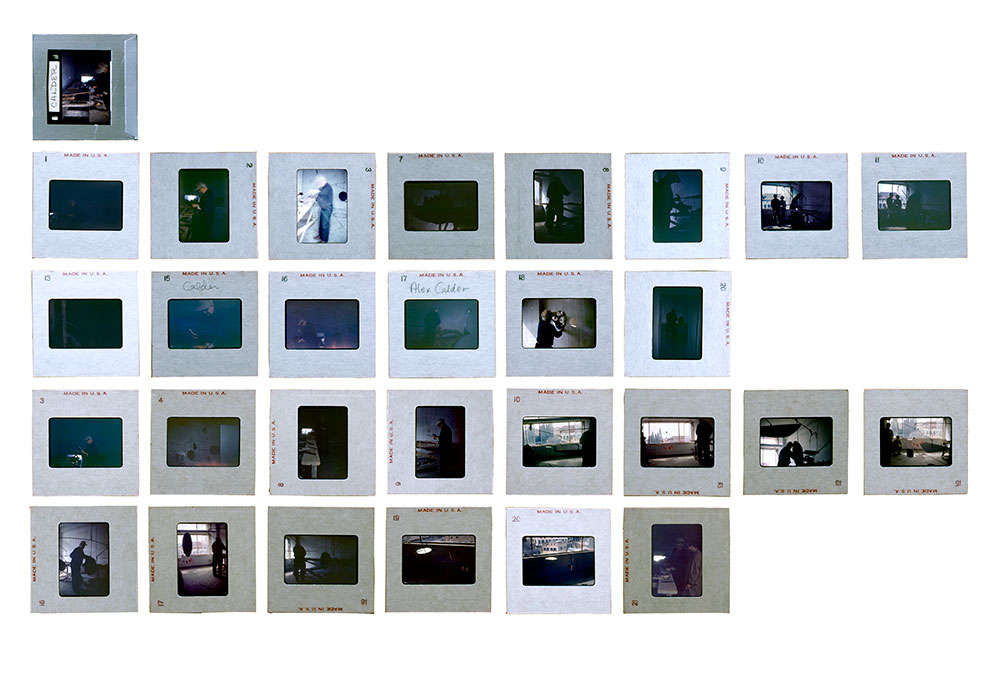|
|
|
|

|
Fragments from
the History of Civil Aviation in
Lebanon. Part VI, section 1c.
Pan American World Airways
(later known as Pan Am) offices
Unidentified photographer. 29 35
mm Colour Slides (1 slide with
metal and glass mount, 14 slides
with cardboard mount numbered in
black, 14 slides with cardboard
mount numbered in red), 5 × 5 cm
each (approx.). Courtesy of Dr
Wassim Chemaytilli.
Commissioned for
Cycles of Collapsing Progress,
Tripoli, 2018, curated by Karina
el-Helou with the collaboration of
Anissa Touati.
Fragments
de l'histoire de l'aviation
civile au Liban. Partie VI,
section 1c. Bureaux de la
Pan American World Airways
(renommée Pan Am).
Photographe non identifié: 29
diapositives 35 mm, 5 x 5 cm
chaque. Courtesy Dr Wassim
Chemaytilli
Commandée pour Cycles of
Collapsing Progress,
Tripoli, 2018. Commissariat:
Karina el-Helou avec la
collaboration d'Anissa
Touati.
|
On September 30,
1953, Middle East Airlines,
general agents for Pan Am in
Lebanon, commissioned Alexander
Calder a mobile. The sculpture was
to be suspended in the hall of the
Pan Am building, designed by
George Rais and Théo Canaan,
assisted by Assem Salam on Assour
(presently Riad el Solh) square.
Calder arrived in Beirut on
January 16, 1954 and stayed one
month, using one of the unfinished
floors of the building as a
temporary atelier.
In the autumn of 1975, war spread
in the heart of Beirut, Riad
el-Solh square became a
battlefield and the mobile
disappeared. In 1991, Pan Am
bankrupted. In the summer of 2014,
29 slides taken inside the Beirut
atelier of Calder were proposed on
Ebay. According to the seller, the
photographs were taken by American
diplomats.
Le
30 septembre 1953, Middle
East Airlines, agent général
de Pan American Word Airways
au Liban, commandait à
Alexander Calder un mobile.
La sculpture était destinée
à être suspendue dans le
hall de l’immeuble de la Pan
Am, conçu par Georges Rais
et Théo Canaan assistés
d’Assem Salam, sur la place
Assour (actuelle place Riad
Solh). Calder arriva à
Beyrouth le 16 janvier 1954.
Il séjourna un mois chez son
ami Henri Seyrig, directeur
de l’Institut français
d’archéologie du
Proche-Orient et travailla
dans un étage inachevé de
l’immeuble de la Pan Am qui
fut mis à sa disposition en
guise d’atelier.
En automne 1975, la guerre
embrasa le centre de
Beyrouth, la place Riad
el-Solh devint un champ de
bataille et le mobile
disparut. En 1991, la Pan Am
cessa d’exister. En été
2014, 29 diapositives prises
à l’intérieur de l’atelier
de Calder étaient proposées
sur Ebay. D’après le
vendeur, les photographies
furent prises par des
diplomates américains.
|
Publication
- Cycles of Collapsing Progress. Works on Paper
Related Project
- Fragments
from the History of Civil
Aviation in Lebanon. Part
IV, section 2b
|
|
|
|
|